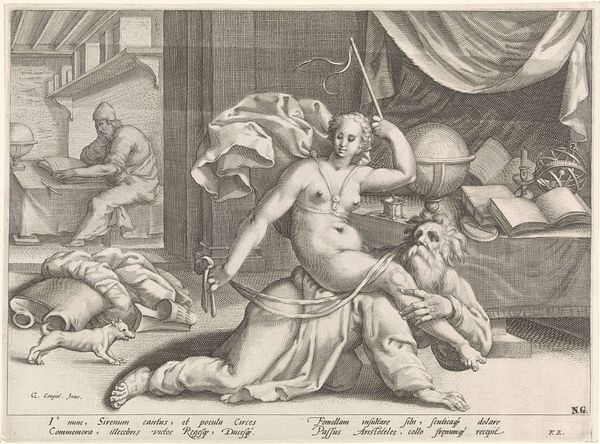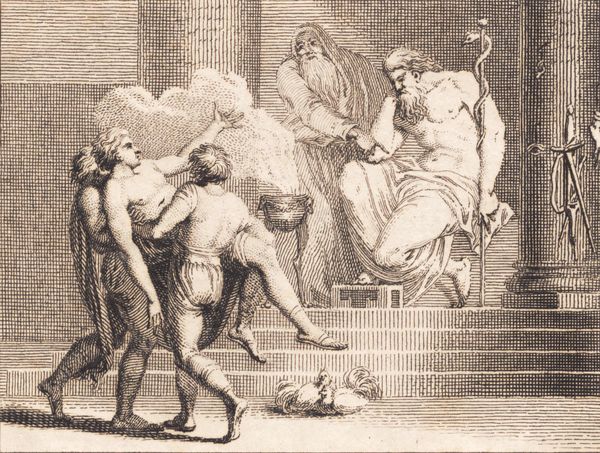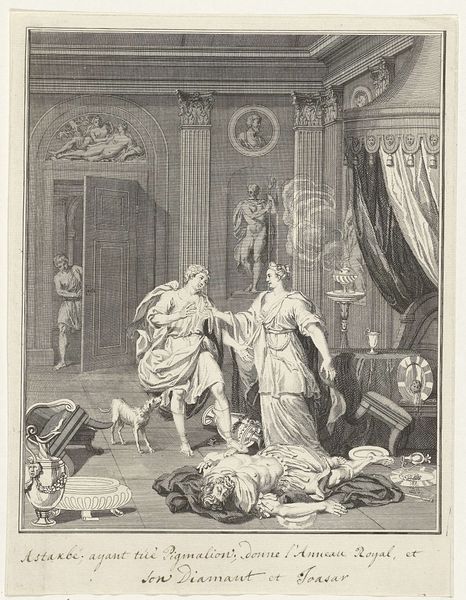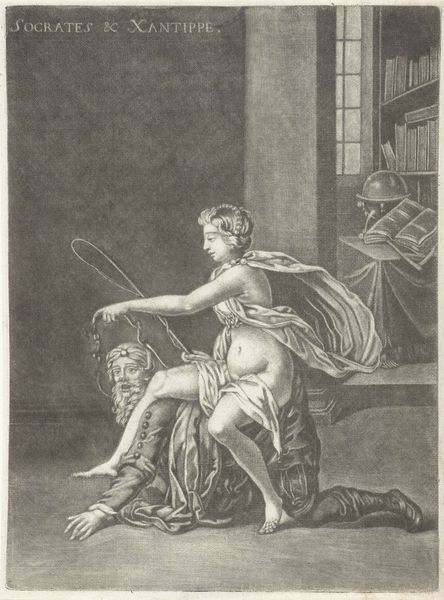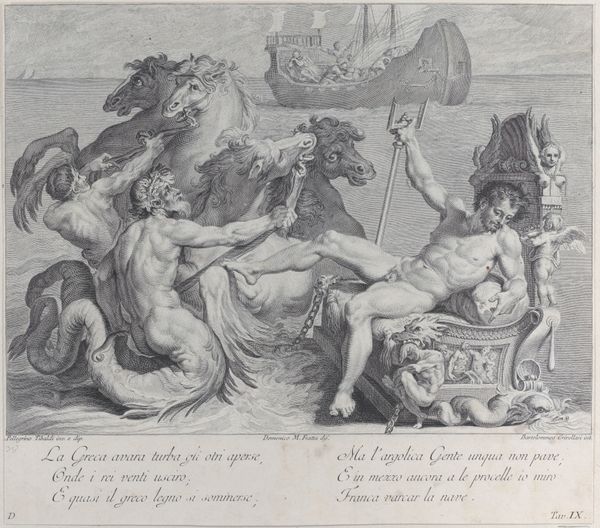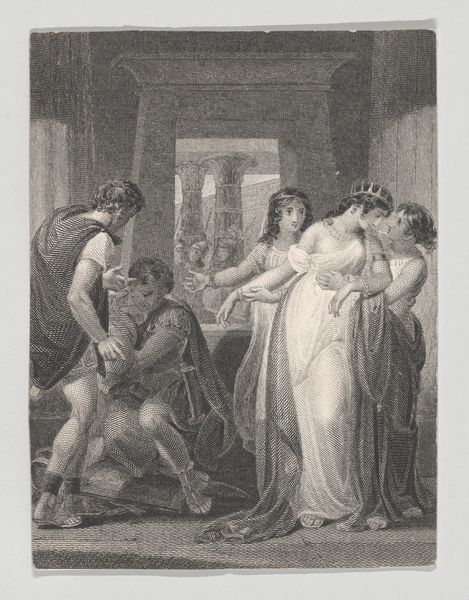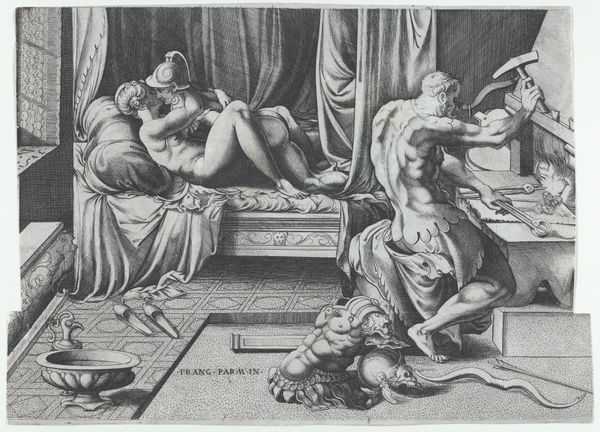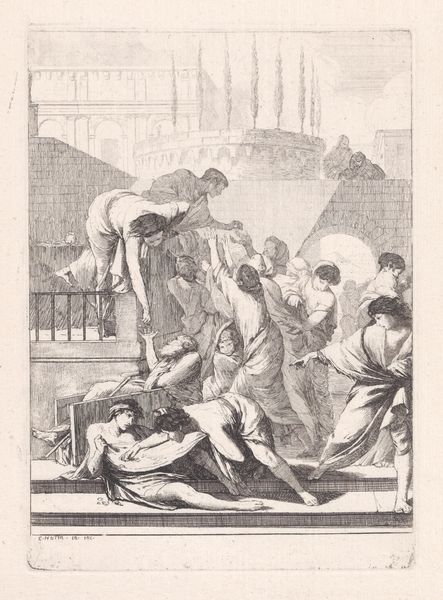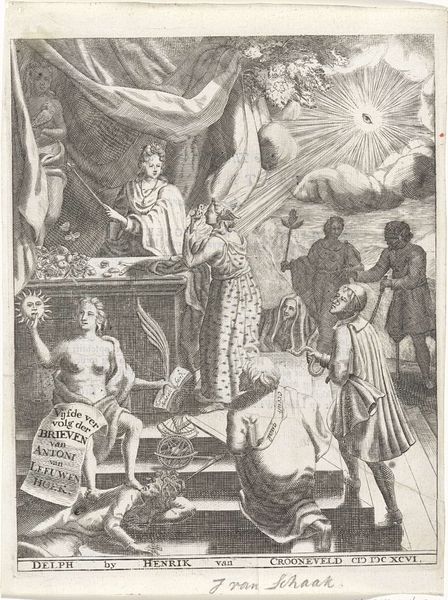
print, engraving
#
pencil drawn
#
narrative-art
#
baroque
# print
#
pencil sketch
#
charcoal drawing
#
figuration
#
portrait reference
#
pencil drawing
#
portrait drawing
#
history-painting
#
engraving
Dimensions: height 392 mm, width 478 mm
Copyright: Rijks Museum: Open Domain
Editor: Here we have Pieter Nolpe’s "Daniel in the Lions’ Den," an engraving from the mid-17th century, currently housed at the Rijksmuseum. I’m struck by the chaotic energy of the scene, all those limbs and ferocious animals crammed into the space. What’s your take on this print? Curator: Well, looking at it through a historical lens, consider how biblical narratives were often used to reinforce social and political ideologies. Think about who might have commissioned such a work, and what message they were trying to convey. Do you notice anything in particular about how Daniel, or perhaps the figure interpreted to be Daniel in this particular depiction, is positioned relative to the lions and other figures in the scene? Editor: It seems there’s no clear Daniel present. Instead, other figures appear victimized within the pit. But, given the turbulent period in which Nolpe worked, with shifting religious and political powers, could this reinterpretation speak to contemporary anxieties around faith and persecution? Curator: Precisely! And consider how printmaking functioned as a mode of dissemination. Engravings like these weren't just art objects; they were vehicles for circulating ideas and shaping public opinion. Who do you imagine the primary audience would be? Editor: Maybe a literate, middle-class audience? People who had some disposable income and were engaged in religious and political discourse. So the graphic nature could be intended to shock or even mobilize them? Curator: Exactly! This depiction of "Daniel in the Lion’s Den" departs significantly from other popular images of that time. Considering social-political and religious contexts certainly shifts the lens, impacting how we approach our interpretation. Editor: This conversation has totally reshaped my understanding. Thanks! Curator: Indeed! It is critical to reflect on how an artwork contributes to the cultural narrative of its period, especially when encountering shifts in depiction of classic interpretations of Biblical stories.
Comments
No comments
Be the first to comment and join the conversation on the ultimate creative platform.
